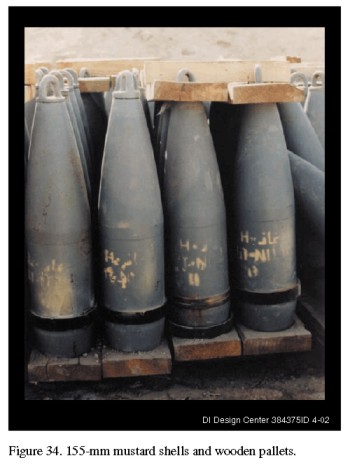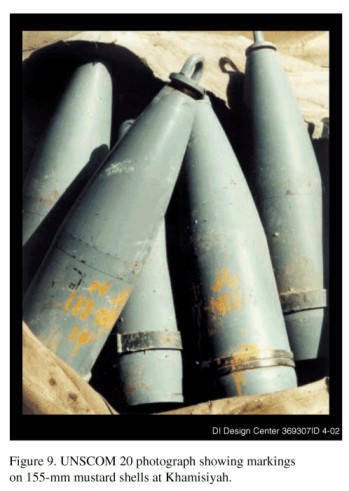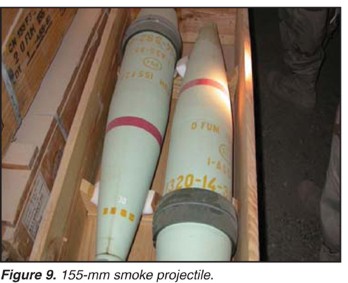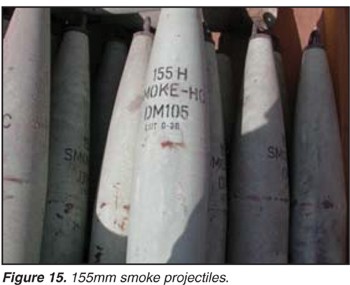| |
Documents |
|
|
CURRENT NEWS |
|
CASE NARRATIVES |
|
ENVIRONMENTAL EXPOSURE REPORTS |
|
HELP FOR VETERANS |
|
|
||||
- 155mm GB nerve agent artillery
- Binary Agents. Iraq had researched mixtures of different
- chemical agents, mixed chemical, and biological agents.
- UNSCOM information indicated Iraq tinkered with the following
- mixtures of different G nerve agents from 1987 to 1989.
- GB and GF
- GB and isobutyl GB
- GB and GS (sec-butyl GB)
- GB and isopentyl GB
- isopentyl GB and GF
- GS and GF
- CS (tear gas) and aflatoxin
- Mustard and tricothecene mycotoxins
- UNSCOM information indicated that Iraq mixed GF with GB to
- enhance its persistency and evaporative characteristics in the
- hot Middle Eastern climate.
Sarin (GB, 1-methylethyl ester of methylphosphonofluoridic acid)
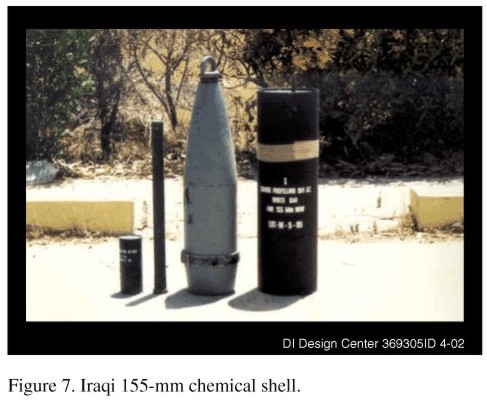
Iraqi 155mm unmarked GB artillery
- America also produced a variety of chemical weapons, but in
- nerve agent artillery pieces it started with the older M687, and
- progressed up to the M121A1.
|
Sept 16, 1969 |
A 155-mm projectile filled with sarin binary reagents was test fired at Dugway Proving Ground. |
| 1976 | The army standardized the M687 Binary GB2 155-mm projectile. |
|
M687 binary projectile starts production at Pine Buff.
|
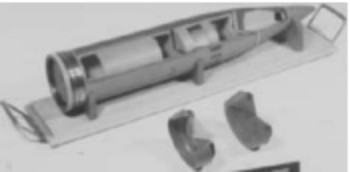
M687 155mm GB Binary Artillery round
GB binary (sarin, GB2): Methylphosphonyl difluoride (denominated DF) is located in 1 canister, while a mixture of isopropyl alcohol and isopropyl amine (denominated OPA) is in a second canister. The isopropyl amine binds the hydrogen fluoride generated during the chemical reaction. After deployment of the weapon, the 2 canisters rupture, producing GB.
A binary artillery shell is projected from an artillery
piece with a acceleration of over 100g, and spinning at thousands of RPM. It also gets hot from the propellant, breaking the
membrane separating the two chemicals, and mixing them thoroughly.
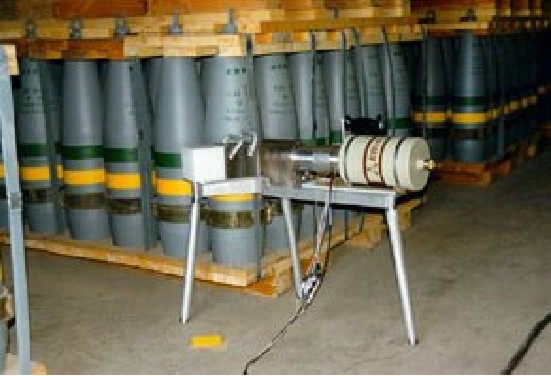
M121A1 155mm GB Binary Artillery round
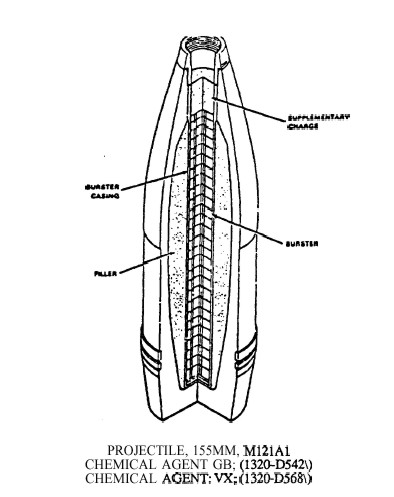
Each M121A1 is 100 pounds, with a green and yellow stripe.
- One distinguishing element of chemical artillery over conventional
- artillery is the chemical warheads are gray while regular High
- Explosives is green.
- The Iraqi 155mm GB artillery, and the American M121A1 are
- nearly identical in shape and color. Which supports the theory
- that we gave them to the Iraqis in the 1980"s. Soviet GB artillery
- was usually 152mm, though Yugoslavia did produce some 155mm
- GB rounds for Iraq.
- The Iraqi Inventory was not well marked, so you couldn't tell what
- was chemical and what was not. Even in this CIA photo a good deal of
- the rounds are missing the black band that others right beside them
- have. It might be a phosphorous smoke round, it might be Mustard,
- only a X-ray would show for sure.

Iraq's artillery pieces for firing 155mm rounds:
76 French GCT Self-Propelled
(SP) Howitzers
18 Ex-Iranian M109 SP Howitzers
3 Italian Palmaria SP Howitzers
92 German FH70 towed guns
200 Austrian GHN45 towed guns
18 French Type 1950 towed howitzers
124 South African G45 towed guns
Known locations of Nerve Agent artillery 1990-1991:
UkhaydirMuhammadiyatKhamasiyahMiddle and Southern Iraq.
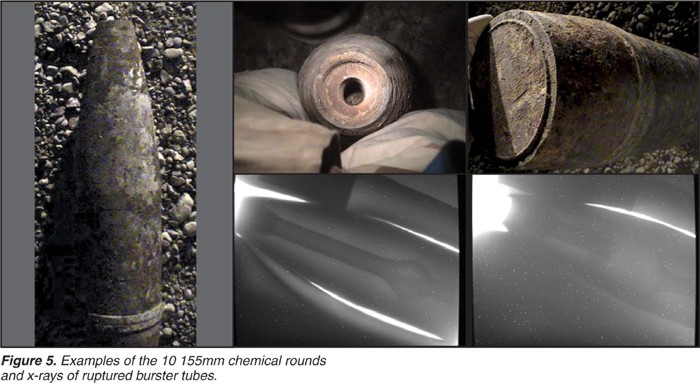
- It is our belief at DSBR that the EOD personnel in Iraq on May 15th,
- 2004 may have been trying to disarm a American M121A1. That
- the Pentagon will not disclose any details because its Pre-Gulf War,
- and something we gave Iraq. That unmarked chemical weapons
- existed during the 1990-1991 Gulf War, and that DOD would have
- to concede that chemical weapons exposures were possible.
CIA imagery of Iraqi 155mm ammunition
